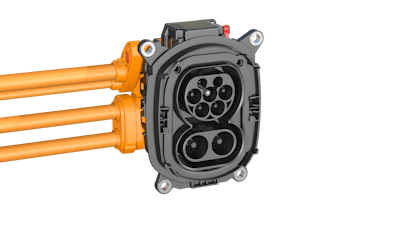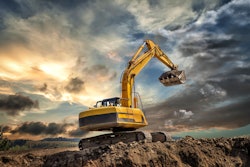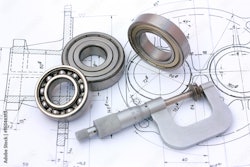
The year 2022 marks an important anniversary in vehicle electrification. On July 15, 1907, the London Electrobus Company debuted the first electric bus. It ran a regular route from Victoria Station to Liverpool Street in London. Although the company gradually expanded its bus fleet and number of routes, it stopped running electric buses in less than three years.
Dormant for more than a century, fast forward 115 years, and the industry is going “back to the future." It is returning to electric and shifting from internal combustion engines (ICEs) to reduce fuel consumption and emissions while optimizing efficiency and productivity.
According to one OEM, by the year 2030, 25% to 30% of new industrial and commercial buses and truck sales will be battery and fuel-cell electric vehicles. In the following decade, the industry will see exponential growth in electric vehicles between 2030 and 2040, with EVs becoming the dominant platform across commercial applications.
Electrification Influencers
Factors that are influencing this historic move to electrification in commercial vehicles include:
- Public demand for improved sustainability
- Cost savings
- Increased government regulations intended to reduce greenhouse gas emissions
When governments mandate lower emissions, companies are driven to adopt new, more sustainable technologies. That demand also creates economies-of-scale that stimulate innovation and help to reduce the cost of advanced new technologies.
The business case for commercial electrification is appealing and improves every day. First, the fewer number of components in electric vehicles (EVs) versus ICEs equates to significantly lower maintenance costs. Second, recent improvements in battery technology are expanding range and improving EV economics. Finally, steeply rising fuel prices make EVs more attractive economically due to their lower cost-per-mile. With these and other factors working in EVs’ favor, the prediction is that the total cost of ownership of an EV will be lower than that of ICE by 2027 or 2028.
As if that’s not compelling enough, EVs are also quieter than ICE vehicles. This improves the operating experience and reducing noise complaints, which is particularly beneficial for construction or landscaping equipment used in heavily populated areas.
Electrification Challenges and Barriers
While EV technology has made huge leaps during the last few years, especially in passenger cars, the shift to commercial vehicle electrification is much more challenging. Industrial and commercial vehicle electrification is complex and differs significantly from passenger car electrification.
While a passenger car usually has available downtime for charging, many industrial and commercial vehicles are in an almost constant state of use. This makes lengthy charging requirements a barrier to adoption. In addition, heavy batteries reduce the amount of weight that can be hauled or carried. With current technologies, an increase in EV range means a decrease in cargo carrying ability. However, this is changing as innovations in lighter, more-powerful batteries are expected to be available in the future, which will alter EV hauling performance and economics.
Compared to passenger cars, the need to move heavier loads across greater distances and for longer periods is driving the development of higher voltage architectures and, consequently, innovations and engineering solutions for commercial vehicles. Commercial EV applications will continue to deliver faster charge times and higher battery capacities to close the financial and performance gaps.
Another obstacle to EV adoption in the agricultural industry is the fear of the battery losing charge in a remote location, such as logging in a marshy area. In this example, the weight of the battery is not an issue. However, the worry about accessing a charger is a barrier to acceptance. Also, a current lack of standardization in farming is also an issue.
Hybrid Solutions
For now, hybrid solutions are enabling continuous duty cycles. These configurations are better suited for heavy trucks, construction and other heavy industries. Current battery technology is not advanced enough to be viable for a long-haul truck in North America and many other regions. However, hybrid solutions, including hydrogen fuel-cell technologies, will continue to help industries bridge the gap across all applications, providing decreased emissions and longer duty-cycle options.
Ideal Applications
Other commercial vehicle applications well-suited for full electrification. North American school buses, with dedicated routes and regular downtime, are an ideal candidate for electrification. Other applications benefit from electrification as well, including many mining and small construction vehicles. These vehicles shut down at night, which allows for ample charging time and provides improved safety benefits versus their ICE counterparts.
In addition to differences in electrification based on industry, location also plays a role in the speed of EV adoption. Wealthier nations with the infrastructure to support EVs will have an advantage in terms of adoption rates. Densely populated cities, such as Los Angeles and Shanghai, are experiencing a more rapid shift to EVs. In these cities, the benefit of cleaner vehicles is evident in the reduction of greenhouse gas emissions and noise pollution.
Engineering Challenges
As OEMs shift to EVs, they face engineering challenges. A considerable amount of energy is transmitted in EVs, which leads to more complex safety and shielding systems than what is required in an ICE vehicle. Safety, always at the forefront of any vehicle design, demands special attention in EVs to make sure the user is isolated from the immense stored energy. Color coding is not enough. Only qualified technicians should access the high voltage componentry.
Because of the maturity of ICE vehicles, many systems and components are standardized. However, the early stages of EV development mean standardization has yet to be achieved. EVs are still a new frontier in the industrial and commercial sectors. A global race is in process to drive standards for the different markets and applications to further improve economics and operability.
To facilitate the transition to EVs in the industrial and commercial sectors, OEMs may want to work with a component supplier that is willing to co-engineer with them, especially with sensing and connectivity solutions. Partnering with a team to customize solutions and optimize them to each application can be beneficial. A supporting team will work in lock step with the OEMs’ engineering teams to design, develop and drive efficiency of the total system.
The EV Move Will Continue
The shift to electrification will continue to accelerate. While EVs were created more than a century ago, it was not until recently that they have become a viable substitute for ICE vehicles. As the industry develops, EVs are at a point where customers can trust them to be predictable and dependable. Because of improvements in performance and infrastructure, end users have less anxiety about using an EV. In addition, awareness of the environmental impacts of ICE vehicles continues to increase.
During the next five years, commercial EVs will take off because of continuous improvements in technology and innovation.
Greg Fehribach is chief technology officer, Industrial and Commercial Transportation, TE Connectivity.



















